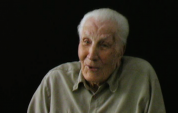1:35 | Joe Wyche recalls how the poor economic times of the Great Depression led him to join the Army in the late 1930s.

Joe Wyche recalls how the poor economic times of the Great Depression led him to join the Army in the late 1930s.